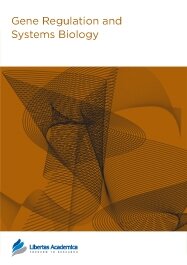

Publication Date: 08 Oct 2009
Type: Short Report
Journal: Gene Regulation and Systems Biology

Hepatocyte growth factor receptor tyrosine kinase substrate (HRS) is an endosomal protein required for trafficking receptor tyrosine kinases from the early endosome to the lysosome. HRS interacts with Merlin, the Neurofibromatosis 2 (NF2) gene product, and this interaction may be important for Merlin’s tumor suppressor activity. Understanding the evolution, origin, and structure of HRS may provide new insight into Merlin function. We show that HRS homologs are present across a wide range of Metazoa with the yeast Vps27 protein as their most distant ancestor. The phylogenetic tree of the HRS family coincides with species evolution and divergence, suggesting a unique function for HRS. Sequence alignment shows that various protein domains of HRS, including the VHS domain, the FYVE domain, the UIM domain, and the clathrin-binding domain, are conserved from yeast to multicellular organisms. The evolutionary transition from unicellular to multicellular organisms was accompanied by the appearance of a binding site for Merlin, which emerges in the early Metazoa after its separation from flatworms. In addition to the region responsible for growth suppression, the Merlin-binding and STAM-binding domains of HRS are conserved among multicellular organisms. The residue equivalent to tyrosine-377, which is phosphorylated in the human HRS protein, is highly conserved throughout the HRS family. Three additional conserved boxes lacking assigned functions are found in the HRS proteins of Metazoa. While boxes 1 and 3 may constitute the Eps-15- and Snx1-binding sites, respectively, box 2, containing the residue equivalent to tyrosine-377, is likely to be important for HRS phosphorylation. While several functional domains are conserved throughout the HRS family, the STAM-binding, Merlin-binding, and growth suppression domains evolved in the early Metazoa around the time the Merlin protein emerged. As these domains appear during the transition to multicellularity, their functional roles may be related to cell-cell interaction.
PDF (13.54 MB PDF FORMAT)
RIS citation (ENDNOTE, REFERENCE MANAGER, PROCITE, REFWORKS)
BibTex citation (BIBDESK, LATEX)
XML
PMC HTML
The reviewing and editorial management of our paper was timely, thorough, and systematic. In particular the reviewers' comments resulted in a paper significantly more robust than the first version.

All authors are surveyed after their articles are published. Authors are asked to rate their experience in a variety of areas, and their responses help us to monitor our performance. Presented here are their responses in some key areas. No 'poor' or 'very poor' responses were received; these are represented in the 'other' category.See Our Results
Copyright © 2013 Libertas Academica Ltd (except open access articles and accompanying metadata and supplementary files.)
FacebookGoogle+Twitter
PinterestTumblrYouTube